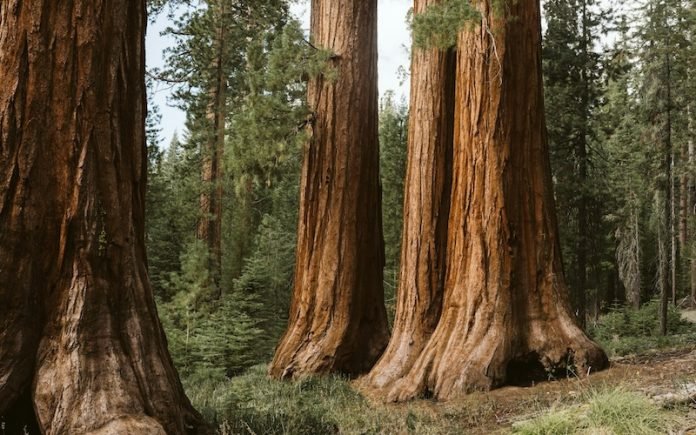
Once upon a time, in what is now New Brunswick, Canada, scientists made an amazing discovery.
While most of the time, all we find of ancient trees are their trunks, without any clues to what their tops looked like, these researchers found something special.
They stumbled upon fossils of trees that still showed their full shape, including a very unusual crown of leaves. This discovery, shared with the world in February, turned our understanding of ancient trees on its head.
Imagine a tree that doesn’t look like any tree you’ve ever seen before. Instead of the wide branches and leaves we’re used to, this tree had a slim trunk with a massive amount of long leaves sprouting all around it.
Robert Gastaldo, a scientist from Colby College in Maine, was amazed by how this tree looked. It reminded him a bit of a fern or a palm tree, but it was actually from a time long before palm trees even existed—about 350 million years ago!
The leaves of this ancient tree were something out of a storybook. Unlike ferns or palms, which have just a few leaves at their top, this tree boasted over 250 leaves shooting out from its trunk.
Each leaf was huge, extending about 1.75 meters (almost 6 feet) from the trunk, and they believe the leaves grew even longer than that. All these leaves formed a dense, bushy canopy around the trunk, which was quite thin in comparison.
This discovery wouldn’t have been possible without the teamwork of scientists from around the world, including Matthew Stimson and Olivia King from the New Brunswick Museum and Saint Mary’s University.
Their work gives us a glimpse into the evolution of plants and how some grew into the tall trees we know today.
The story of these fossils is a reminder of the incredible variety of life that has existed on Earth. Some ancient trees looked completely different from anything we see now, as if they came straight out of a Dr. Seuss book.
It’s fascinating to think about how different the world looked back then, and how trees adapted in various ways to thrive.
The tree they found, which they’ve been studying for seven years, was preserved in a unique way. An earthquake long ago caused it and other plants to be buried suddenly along a lake, keeping them in almost perfect condition for us to find.
This tree, with its leaves still attached to the top, is a rare treasure in the fossil record, showing us how ancient trees might have looked.
This particular tree had a clever strategy. Its dense canopy of leaves helped it catch as much sunlight as possible, giving it an edge over other plants.
This ancient tree is now considered the earliest evidence we have of smaller trees growing under the canopy of taller forests.
It shows us that even in the early days of plant life on land, the world was a complex place with plants trying out all sorts of shapes and ways of living.
The findings from New Brunswick are more than just an interesting story; they challenge what we thought we knew about the past.
They show that the history of life on Earth includes all kinds of plants and animals that were very different from what we see today. Evolution has taken many turns, leading to a diverse range of forms and strategies for survival.
This ancient tree, with its unique appearance and growth strategy, is just one example of the many experiments in life that our planet has witnessed.
The research findings can be found in Current Biology.
Copyright © 2024 Knowridge Science Report. All rights reserved.



